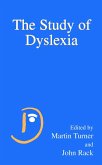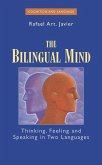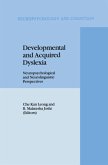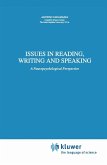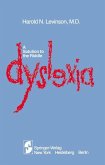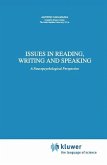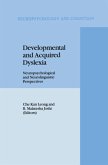The Study of Dyslexia aims to make a range of research perspectives available and accessible in a single place. Not only does it introduce important research findings that may be unfamiliar to many, it also integrates them in a much-needed synthesis of knowledge from different contributing disciplines. Since everyone prefers to understand what they are doing, this theoretical account of the important areas in dyslexia will be of interest and relevance to the many professionals practising in this field.
In long-ago 1999, the Dyslexia Institute and Plenum Press conceived a plan for two books which would gather the best of current knowledge and practice in dyslexia studies. This would benefit those-but not only those-many individuals who train with us, acquiring a postgraduate certificate and diploma with our higher education partner, the University of York. Since then, the century changed, the hinge of history creaked and Plenum was taken over by Kluwer Academic Publishers, but the first of the pair, Dyslexia in Practice, emerged quickly and on schedule (Townend and Turner, 2000). Written by staff and close associates of the Institute, its chapters were produced under close scrutiny and with the expedition of a command economy. To our delight, the book has seen a success which went beyond the dreams of its editors: it has been adopted by other courses similar to our own and is widely referred to. The same was never likely to be true of The Study of Dyslexia, which was envisaged as a theoretical companion volume written by authors and researchers of international repute. Nearly five years after the idea first took shape, this second volume now arrives to complete the enterprise, but it has been a very different project.
In long-ago 1999, the Dyslexia Institute and Plenum Press conceived a plan for two books which would gather the best of current knowledge and practice in dyslexia studies. This would benefit those-but not only those-many individuals who train with us, acquiring a postgraduate certificate and diploma with our higher education partner, the University of York. Since then, the century changed, the hinge of history creaked and Plenum was taken over by Kluwer Academic Publishers, but the first of the pair, Dyslexia in Practice, emerged quickly and on schedule (Townend and Turner, 2000). Written by staff and close associates of the Institute, its chapters were produced under close scrutiny and with the expedition of a command economy. To our delight, the book has seen a success which went beyond the dreams of its editors: it has been adopted by other courses similar to our own and is widely referred to. The same was never likely to be true of The Study of Dyslexia, which was envisaged as a theoretical companion volume written by authors and researchers of international repute. Nearly five years after the idea first took shape, this second volume now arrives to complete the enterprise, but it has been a very different project.
From reviews of Dyslexia in Practice: A Guide for Teachers:
`The authors in this book represent an important group of professionals whose work is central to the understanding, identification and alleviation of dyslexia in the everyday practice of teachers in various settings....In this book one finds many promising practices clearly described. The editors are to be congratulated...it can help those interested and involved in finding, using and developing effective practices for pupils with dyslexia.'
Peter D. Pumfrey, Emeritus Professor of Education, University of Manchester in The Psychology of Education Review, 26:1 (2002)
`This book enables teachers to view the bigger picture...the book complements their teaching to ensure learning is accessible to everyone.'
Liz Griffiths, BDA, Buttle Trust Action Research Group in Dyslexia Contact, 20:2 (May 2001)
`This book provides an important resource for teachers who wish to become competent in the skills required for the assessment, teaching, supporting and counselling of dyslexic people in a variety of settings. It promises to reach many teachers and in turn, their students and families.'
Margaret J. Snowling, University of York, UK
`The authors in this book represent an important group of professionals whose work is central to the understanding, identification and alleviation of dyslexia in the everyday practice of teachers in various settings....In this book one finds many promising practices clearly described. The editors are to be congratulated...it can help those interested and involved in finding, using and developing effective practices for pupils with dyslexia.'
Peter D. Pumfrey, Emeritus Professor of Education, University of Manchester in The Psychology of Education Review, 26:1 (2002)
`This book enables teachers to view the bigger picture...the book complements their teaching to ensure learning is accessible to everyone.'
Liz Griffiths, BDA, Buttle Trust Action Research Group in Dyslexia Contact, 20:2 (May 2001)
`This book provides an important resource for teachers who wish to become competent in the skills required for the assessment, teaching, supporting and counselling of dyslexic people in a variety of settings. It promises to reach many teachers and in turn, their students and families.'
Margaret J. Snowling, University of York, UK


